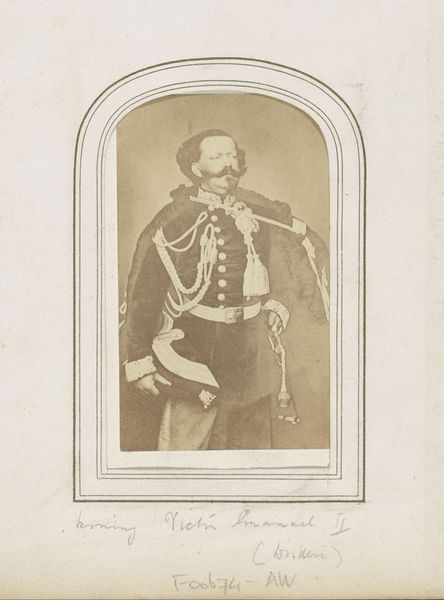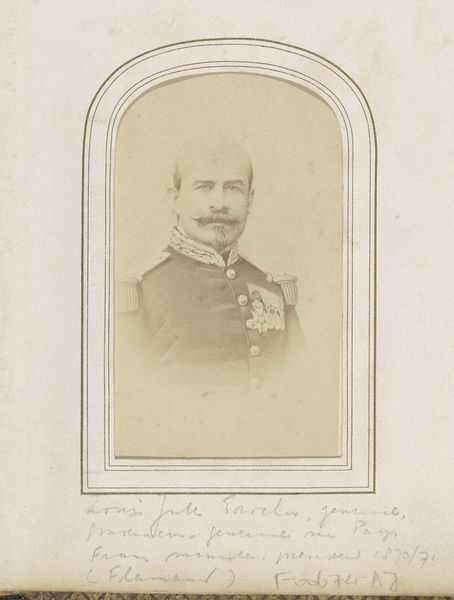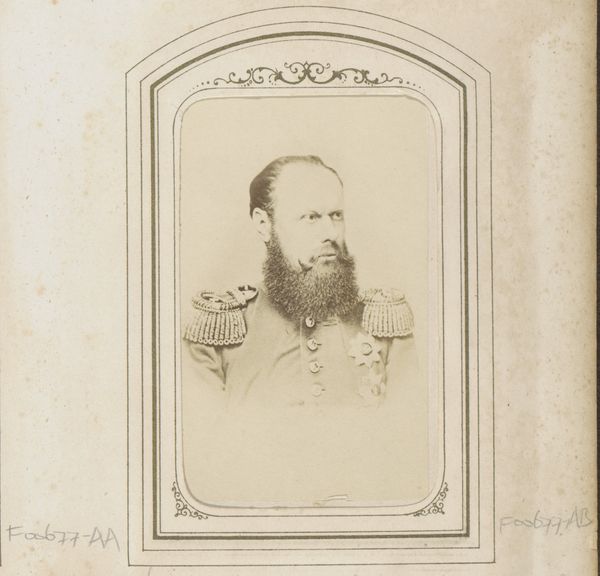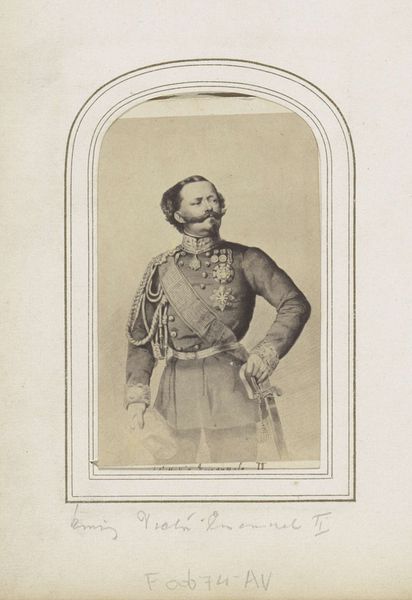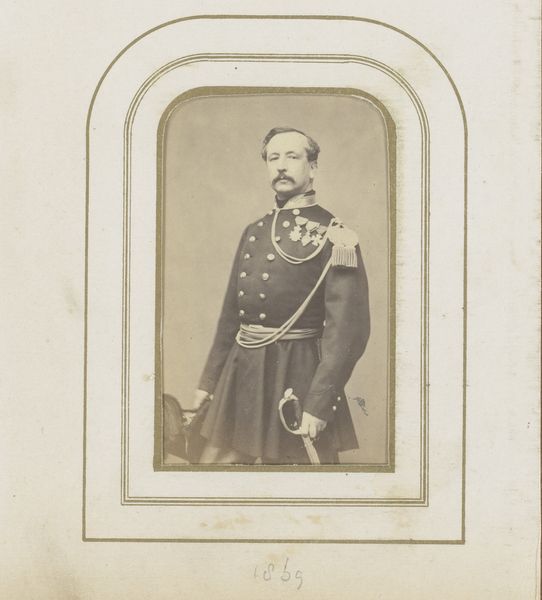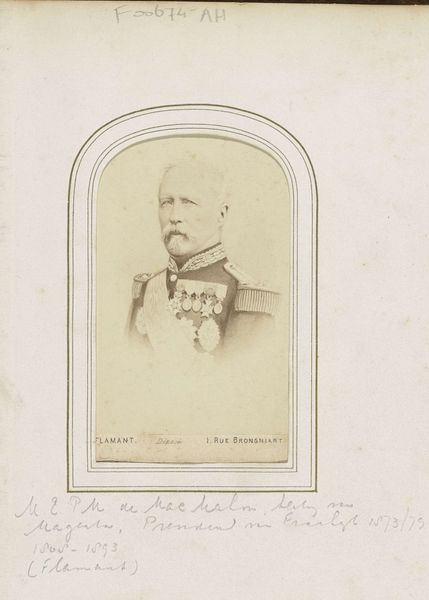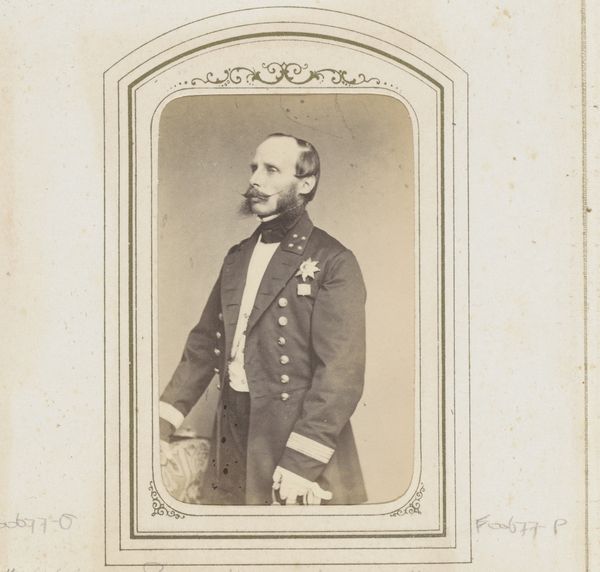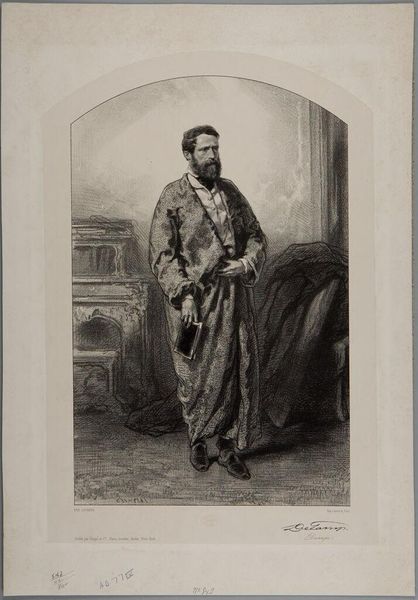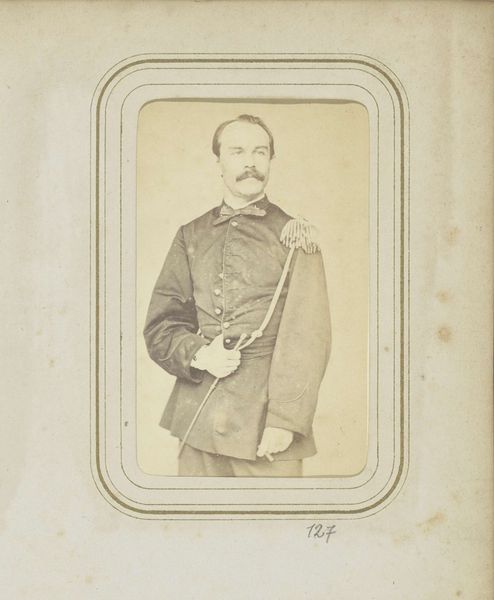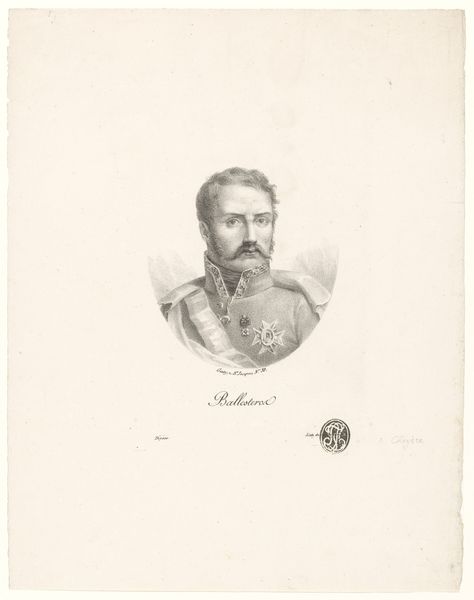
Reclameprentje met een portret van tsaar Alexander II van Rusland c. 1865 - 1880
0:00
0:00
anonymous
Rijksmuseum
print, photography, albumen-print
#
portrait
# print
#
photography
#
history-painting
#
albumen-print
Dimensions: height 61 mm, width 39 mm, height 104 mm, width 53 mm
Copyright: Rijks Museum: Open Domain
Curator: This is a peculiar piece from the Rijksmuseum's collection: a promotional print featuring a portrait of Tsar Alexander II of Russia. The albumen print, dating roughly from 1865 to 1880, functions as an advertisement. Editor: My initial thought is, this guy has some serious decorations! And that moustache, quite something. It gives a sort of stern, almost staged authority to the image...though being framed like this almost like an antique brooch, adds this layer of...vulnerability. Curator: Indeed. Albumen prints were very popular at the time, celebrated for their fine detail. But the crucial context here is the function of this portrait within the booming business of imperial imagery. Such images sought to bolster imperial authority but here we see how images of the Tzar entered the domain of consumerism and commercial advertising. Editor: The merging of power and, uh, "buy this chocolate" feels unsettling. Like selling authority itself... Was this portrait popular in the Russia at that time? Curator: Quite possibly. What we see at play is the power of imagery to solidify public loyalty. Whether that was through straightforward propaganda or these early forms of marketing, these prints offer insight into that process. Note the oval format within the frame, it would evoke cameos. Editor: That explains the feeling of an antique cameo I've gotten since the first moment! It’s like... he’s becoming an icon. Was the actual person this stern? Curator: His reign was complex—marked by both progressive reforms and authoritarian actions, eventually ending in his assassination in 1881. Which lends, in retrospect, an interesting gravity. Editor: Wow. It’s odd how knowing that adds another layer to viewing him as a marketing icon, an artefact, makes you almost sense what is coming. Curator: Yes. Seeing images in terms of public representation and influence provides a vital historical framework and lens through which to understand a ruler and, also, how this ruler wants to be remembered, consumed even. Editor: Ultimately, there is something sad to me here in all of this "consumed even". You strip someone's complex story to their visual image to promote chocolates. But I will remember the history now, while I enjoy the history in the museums... Thank you. Curator: My pleasure, there is a tragic element that certainly lingers. Thank you.
Comments
No comments
Be the first to comment and join the conversation on the ultimate creative platform.
